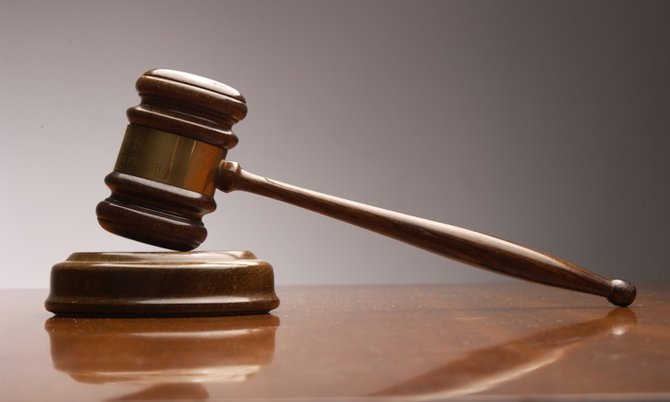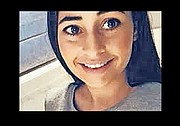By NICO SCAVELLA
Tribune Staff Reporter
nscavella@tribunemedia.net
THE older brother of a South African woman found hanged in a room at the Atlantis resort last year, yesterday urged a jury to find that his sister was murdered. He said the injuries found on her corpse did not point to a suicide.
Johann Van Eeden claimed that 58 of the 62 injuries Carla Van Eeden suffered, were “unequivocally” found to have occurred either prior to or at the time of her demise, and were more than enough proof that his 25-year-old sister’s death was “not at her own hands”.
Ms Van Eeden was found hanging from a green and white cellphone lanyard around her neck, which was hanging from a garment hook on the back of the bathroom door in room 3583 at the Royal Towers at Atlantis in May 2018. The lanyard was “double-looped” loosely around her neck.
Her brother, in addressing the five-member jury, further asserted that it would not have made sense for his younger sister to have taken her own life, because this was contrary to the sole reason she came to the Bahamas in the first place: to fulfill her childhood dream to swim with the dolphins.
He said his sister only stopped in the Bahamas because she had “extra time” in between her overall plans to meet up with a friend in Las Vegas.
“Consider why my sister would take her own life, just before without realising the dream she has had for so many years to actually swim with and touch dolphins,” Mr Van Eeden told the jury. “As simple and childlike as it is, that’s what it was. She really wanted to swim with the dolphins.”
He added: “Why would she take her own life before realising her dream since she was a little girl? It just doesn’t make sense.”
Mr Van Eeden, who alone has shouldered the burden of representing his family during the inquest, told the jury he has “been through hell” and “tortured” himself by scouring the evidence in the matter, which included him seeing the graphic photographs of his sister’s hanged corpse.
“Imagine how a family feels when they are told their loved one passes away in a different country and then arrives home with all the injuries noted on (an autopsy report)?” he said. “It is probably the most horrible thing in the whole world to be confronted with.”
He added: “There is no doubt in my mind that my sister’s demise was not at her own hand. No doubt at all.”
Meanwhile, Atlantis’ attorney Giselle Pyfrom asserted that Ms Van Eeden’s death was a suicide. She said regardless of whether it was accidental or intentional, it was definitely influenced by the fact that she was not only dealing with personal issues leading up to her death, but that she was severely intoxicated around that time.
Ms Pyfrom noted that prior to her death, Ms Van Eeden had said that she was unhappy with her job, and was “emotional” about her breakup with her boyfriend, Tom, which had happened just one month before she arrived at Atlantis. Ms Pyfrom noted that in voice notes that were previously played for the jury, Ms Van Eeden seemed to be “vacillating” between being “unhappy and emotional” and being “very happy” in an almost cyclical fashion.
Ms Pyfrom said that at one point in the voice notes, Ms Van Eeden exclaimed: “I just want to be happy. I hate how I feel!” Then, she said the young woman “immediately switches to feeling happy and excited about swimming with the dolphins”.
Ms Pyfrom said a report from the Miami-Dade Medical Examiner’s Department showed that Ms Van Eeden had a “significant” amount of alcohol in her body prior to her death, and that around the time of her demise, she was in the “excitement stage of alcohol influence”. Ms Pyfrom said the young woman’s blood alcohol level was .134 percent, while her urine alcohol level was .25 percent. And both amounts are “significantly above the legal limit for intoxication”, Ms Pyfrom said, citing the report.
The report further noted: “Based on the concentration of ethanol found in this case, it can be stated that at or around the time of death, the deceased was in the excitement stage of alcohol influence. The clinical signs and symptoms include, but are not limited to, emotional instability, loss of critical judgment, impairment of perception, increased reaction time, motor incoordination and impaired balance.”
“Some of these factors might explain how and why Carla either accidentally or intentionally did harm to herself,” Ms Pyfrom concluded.
The attorney refuted Mr Van Eeden’s claims of his sister being murdered as bordering on the lines of a conspiracy, as that would necessarily imply that Atlantis had gone through the trouble and gathering witnesses to “collude with each other to cook the facts”. And even if that were so, Ms Pyfrom said it would be “very hard to fathom” that all the evidence led would fall in place so perfectly to support his conclusion.
Conversely, Ms Pyfrom told the jurors that the most important thing to note about the evidence was that Ms Van Eeden was alone in her room when she died, that there were no signs of a struggle — much less a fight — and that multiple witnesses testified to that end, none of whom she said “have any reason to be untruthful”.
“In order for Mr Van Eeden’s conclusions to be correct, there would have had to be a conspiracy that involved every witness colluding with each other to cook the facts,” Ms Pyfrom said. “It’s very hard to fathom that all of those things would come together — which would be necessary — in order to conclude what Mr Van Eeden concludes. It just defies logic to think that everyone’s conspired here to cover this up.”
During previous proceedings, Dr Linda Leibenberg, a South African forensic pathologist who conducted the second of two autopsies of Ms Van Eeden at her family’s request, previously testified that the young woman’s death was more likely a homicide as opposed to a suicide.
Dr Liebenberg said Ms Van Eeden’s alleged suicide was actually the result of ligature strangulation and a “subsequent staging of the body” to “create the impression” she was hanged. She said the young woman also had “numerous” scratches, bruises and abrasions about her body, which were in keeping with a person who had been involved in a “violent struggle”.
Dr Liebenberg also said the deceased woman had “drag mark abrasions” on “large parts” of the rear of her body, as well as an area of bruising to the back of her neck. All in all, Dr Leibenberg cited Ms Van Eeden’s body as having suffered 62 injuries in total, the likes of which she said she photographed extensively.
The doctor said she was “taken aback” and “puzzled” when she discovered that the various injuries she found on Ms Van Eeden’s body were not recorded in the first autopsy report compiled by Dr Bridgewater.
But Dr Bridgewater later said he was “dumfounded” at the suggestion from his South African counterpart, and said her assertions were “quite fantastic” because the body he saw days after the incident in question bore no evidence of such a claim.
Instead, Dr Bridgewater said Ms Van Eeden’s body was in “excellent condition” when he conducted the first of two autopsies on the young woman, adding to his “surprise” when he read Dr Liebenberg’s extensive report.
He maintained that Ms Van Eeden died from asphyxia due to hanging, and asserted that whatever Dr Liebenberg observed was likely the result of ‘postmortem artifact’ that “mimics” bruising, which he surmised tricked his colleague into believing Ms Van Eeden was assaulted.
He also shot down Dr Liebenberg’s suggestion of there being some sort of scuffle between Ms Van Eeden and some unknown assailant, as he said he saw no evidence of Ms Van Eeden scraping her neck in a bid to get the ligature off, or even her nails breaking in the process.






Commenting has been disabled for this item.